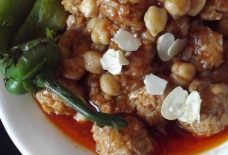Starving Yemenis Find Food Source in Massive Locust Outbreak
SOURCE: THE JERUSALEM POST
BY: TZVI JOFFRE
A massive outbreak of desert locusts has been reported in Yemen, where desert locusts were seen for the first time in three years, according to the Middle East Eye. Yemeni villagers took advantage of the swarms of locusts by using them as an alternative food source.
Yemeni villagers attempted to catch the insects to save their crops, as Yemen is in the midst of a food crisis.
“One swarm covering one square kilometers contains 50 million locusts, and this swarm can eat the equivalent of 100 tons per day,” said Wajeeh Mutawakel, the director general of the Plant Protection Office in the Houthi rebel-controlled Yemeni capital Sanaa, the Middle East Eye reported. “This may cause disaster not only in Yemen but also in other countries, such as in Saudi Arabia.”
Mutawakel did point out though that Yeminis have found a unique way to deal with the plague of locust as “Yemenis are fond of eating locusts.”
Villagers catch the locusts at night when they’re not flying, by throwing scarves or other large pieces of cloth over the insects to trap them and then sweeping them into bags using shovels or their hands, according to the Middle East Eye.
“If locusts had remained for five minutes, they would have wiped out the entire crops,” Yemeni farmer Ameen al-Haqash told the Middle East Eye. “But we wiped them out before they wiped out crops. In a matter of five hours, the village was free from any danger of the locusts.”
“Instead of them eating our vegetables, now we eat locusts with rice and our vegetables are fine,” al-Haqash added. “Locusts swept the entire Arab region, but when they arrived in Yemen, Yemenis eliminated them.”
Local farmers even claimed that in the 1960’s, a villager gave his in-laws a sack of locusts as a marriage payment ahead of his wedding. Some farmers bring the locusts to Sanaa to sell them fresh or grilled near Sanaa’s Great Mosque.
Farooq al-Jaradi told the Middle East Eye as he was purchasing cooked locusts that he only eats the insects because they are considered by Yemenis as a remedy for multiple illnesses, including diabetes and hypertension.
“Locusts don’t threaten food security, especially in Yemen,” Jaradi said. “Yemenis eat them before they eat their crops.”
“Its taste is delicious. If you eat one locust, you will end up wanting to eat five,” said Sanaa resident Wadai al-Nawdah. “I walk every day after breakfast to find locusts for dinner. I have become addicted.”



